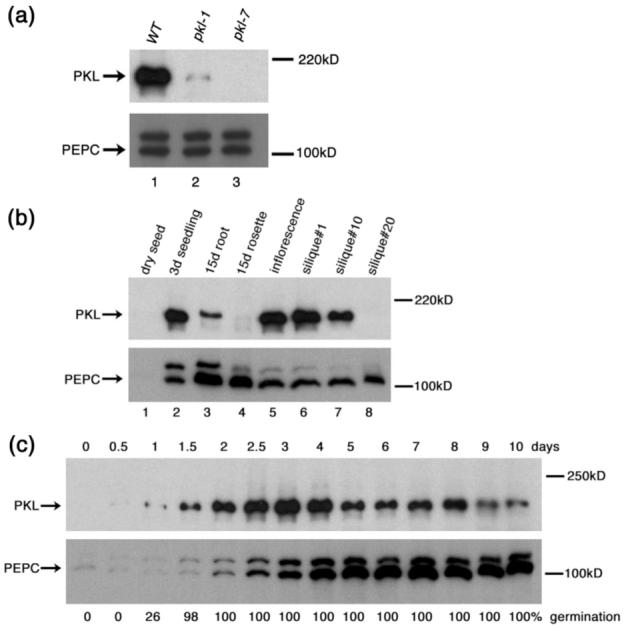Figure 1.

PKL protein preferentially accumulates in differentiating tissue. Western blot analysis of total protein extracts with a polyclonal antibody to the N-terminus of PKL was used to examine the amount of PKL protein levels in a variety of tissues. Levels of PEP carboxylase were similarly determined as a loading control. The size (in kD) of protein molecular weight standards is indicated to the right of each gel.
(a) Levels of PKL protein found in 3-day-old WT (lane 1), pkl-1 (lane 2), and pkl-7 (lane 3) seedlings.
(b) Levels of PKL protein found in dry seed (lane1), 3-day-old seedlings (lane2), 15-day-old roots (lane3), 15-day-old rosettes (lane4), the inflorescence (lane5), silique #1 (lane6), silique #10 (lane7), and silique #20 (lane8). Please see Experimental Procedures for a description of the numbering scheme used for siliques.
(c) Levels of PKL protein found in seedlings that had been imbibed for up to 10 days. The percentage of seedlings that had germinated at each time point is indicated below each lane. 25μg of protein were added per lane in all panels. During this analysis, we observed that PEP carboxylase was only effective as a loading control at 4 days after imbibition and thereafter. Prior to this time, expression of PEP carboxylase is significantly upregulated relative to a desiccated seed as the young seedling develops.
